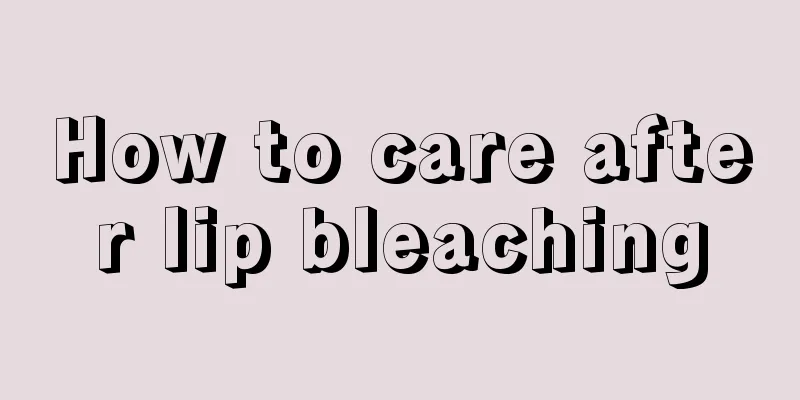Radiotherapy method for nasopharyngeal carcinoma

|
What are the radiotherapy methods for nasopharyngeal carcinoma? Because the nasopharyngeal cavity is deep and narrow, and there are many important blood vessels, nerves, and lymphatic tissues near it, surgical treatment is very difficult and radical resection is not easy to achieve. The pathological characteristics of nasopharyngeal carcinoma are mostly poorly differentiated carcinomas, which are more malignant and more sensitive to radiation, which provides favorable conditions for radiotherapy. After sufficient radiotherapy, nasopharyngeal carcinoma can be controlled or cured. Although nasopharyngeal carcinoma is prone to metastasis and invasion of the skull base, parapharyngeal, and cervical lymph nodes, the radiotherapy field can completely cover these areas. Therefore, radiotherapy is the preferred method for treating nasopharyngeal carcinoma. Data show that the overall five-year survival rate of nasopharyngeal carcinoma with radiotherapy alone has reached about 50%; the five-year survival rate of patients with early-stage nasopharyngeal carcinoma without invasion outside the nasopharyngeal cavity and cervical lymph node metastasis can reach 80% to 90%. Even for patients in the advanced stage, more than one-third of them can survive for more than five years after regular active treatment. In recent years, the methods of radiotherapy have been continuously improved, and a brief introduction is as follows: 1. Conventional external irradiation High-energy rays are often used for treatment, such as gamma rays generated by cobalt therapy machines or high-energy x-rays generated by medical linear accelerators. For neck irradiation, low-penetration radiation rays, namely electron rays, can be used. The irradiation field is designed with reference to clinical examinations, imaging materials, pathological types, etc. The first stage tumor dose in the irradiation field is 3.5 to 4 weeks, reaching 36 to 40 grays (gy). In the second stage, the treatment field is adjusted according to the degree of tumor regression to continue radiotherapy. For radical radiotherapy of nasopharyngeal carcinoma, the irradiation dose of the skull base and nasopharynx is about 60 to 80 grays within 6 to 8 weeks; the radical radiation dose of the cervical lymph nodes is about 60 to 70 grays within 6 to 7 weeks. If there is no cervical lymph node metastasis, a preventive dose of 45 to 50 grays can be given to the neck. 2. Intranasopharyngeal afterloading radiotherapy Using a high-dose rate micro-iridium source (198ir), a computer-controlled motor correctly delivers the radiation source to the irradiated area, and the treatment planning system makes an individualized plan design, with a positive effect. At present, for early-stage nasopharyngeal carcinoma, after conventional external irradiation to a certain dose, high-dose rate brachytherapy can be used to supplement intracavitary afterloading therapy, or when there are relatively limited residual or recurrent lesions in the nasopharyngeal wall after radical external irradiation, high-dose rate brachytherapy can be used to increase the amount of radiotherapy to achieve better results. 3. Stereotactic Radiation Therapy Stereotactic radiotherapy, also known as X-knife, uses an X-ray beam generated by a high-energy linear accelerator to irradiate the irradiated area with multiple small fields of equal centers. The advantage of this method is that it can strictly protect the important organs adjacent to the nasopharyngeal cavity from being exposed to or from radiation, and at the same time, the tumor site can receive the maximum possible dose, so that tumor cells can be effectively killed. For patients with nasopharyngeal carcinoma who have received initial treatment, if there is residual tumor in the parapharyngeal space or the destruction of the adjacent skull base bones has not been controlled after sufficient external irradiation, and the lesion range is within 4 cm in diameter, stereotactic radiotherapy is used to supplement the residual lesions. For patients with nasopharyngeal carcinoma who have recurred after sufficient irradiation, pathologically confirmed external irradiation and stereotactic radiotherapy are used to increase the dose at the lesion, with satisfactory results. IV. Intensity Modulated Radiation Therapy At present, the use of intensity-modulated conformal radiotherapy for nasopharyngeal carcinoma is still in the exploratory stage. Conformal radiotherapy greatly improves the fit between the high-dose distribution area and the three-dimensional shape of the tumor area compared to conventional external irradiation. Patients should be mentally prepared before radiotherapy, clean their teeth, remove carious roots, remove metal crowns, and maintain oral hygiene; promptly treat infected lesions in the head and neck; quit smoking and drinking, prevent colds, and improve general condition. After radiotherapy, you should still go to the hospital for regular checkups. During the recovery period, you must pay attention to diet conditioning, work and rest, and prevent colds and infections. You must protect the skin in the irradiated area from irritation or trauma, attach importance to psychological and physical rehabilitation, maintain an optimistic attitude, and participate in social activities appropriately. |
<<: What are the targeted drugs for nasopharyngeal carcinoma
>>: How long does it take to treat stage 3 nasopharyngeal carcinoma
Recommend
What causes lymphoma
Lymphoma is a malignant tumor that mostly occurs ...
What are the early symptoms of gastric cancer
The early symptoms of gastric cancer are often at...
How to identify whether honey is real or fake
Honey is something we are very familiar with in o...
What is the best method for treating liver cancer? Revealing the treatment principles of liver cancer at different stages
What is the best treatment for liver tumors? With...
What is the difference between stroke and cerebral hemorrhage?
In life, we often encounter various diseases that...
What are the consequences of suddenly stopping bicyclol
Transaminase is very important to the human body....
How to treat early stage lung cancer? 3 treatment methods suitable for early stage lung cancer
For any cancer disease, if the patient can active...
What should I do if my nails are split? Is there any solution?
Split nails are often very embarrassing, because ...
How to cut corns
Corns are a relatively common disease that can ca...
How should colorectal adenomas be examined?
The appearance of colorectal adenoma actually ind...
Is it good for women to eat mango
Mango is a fruit that can beautify and nourish th...
Onychomycosis softens and falls off
If the onychomycosis is more serious, the nails c...
Can I eat watermelon if I have constipation
Watermelon is a common fruit in summer. This kind...
How to prevent bladder cancer?
Bladder cancer is the most common malignant tumor...
Interpersonal phobia
In fact, in modern society, due to the developmen...









